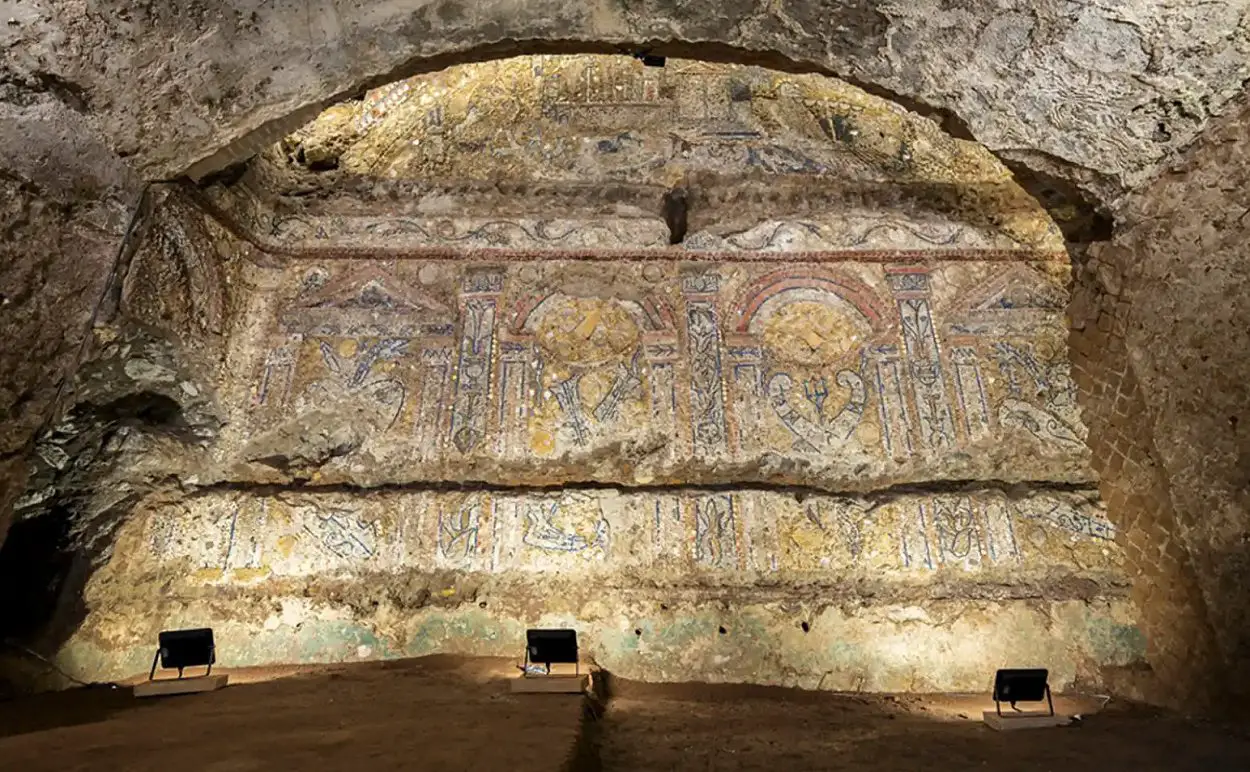Archaeologists have discovered an ornately decorated Roman domus between Rome’s Palatine Hill and the forum.
According to a statement by the Culture Ministry, the Colosseum Archaeological Park’s research project uncovered the structure within the vicinity of the Horrea Agrippiana warehouse complex along the Vicus Tuscus.
The domus was built in multiple phases, between the late 2nd century BC and the end of the 1st century BC during Rome’s Republican age.
Encircling an atrium/garden is the most impressive feature of the structure – the “specus aestivus”, a space for entertaining and banqueting. The specus aestivus has been designed to replicate a grotto, which was initially adorned with impressive water features, facilitated by the presence of fistulas (lead pipes) running through the walls.
Alfonsina Russo, director of the Colosseum Archaeological Park, said: “The discovery confirms what ancient sources said about the presence of extensive residences of representatives of Roman senatorial families in the northwestern area of the Palatine.”
Also uncovered is a “rustic” wall mosaic from the 2nd century BC, which depicts possible naval scenes and imagery of conflict, suggesting that the domus owner was a high status nobleman or soldier. The mosaic has been made using sea shells, Egyptian blue tesserae, precious glass, tiny fragments of marble and other coloured stones.
Within the four delineated sections demarcated by pilasters (columns with square bases affixed to the wall) are depictions of weaponry, trumpets, and ship prows embellished with tridents and rudders, alluding to a dual triumph both on land and at sea. The large upper bezel also depicts a representation of a city overlooking a sea, crossed by three large ships, one of which has its sails raised.
“We will work intensely to make this place, among the most evocative of ancient Rome, accessible to the public as soon as possible,” added Russo.
Header Image Credit : Ministry of Culture





